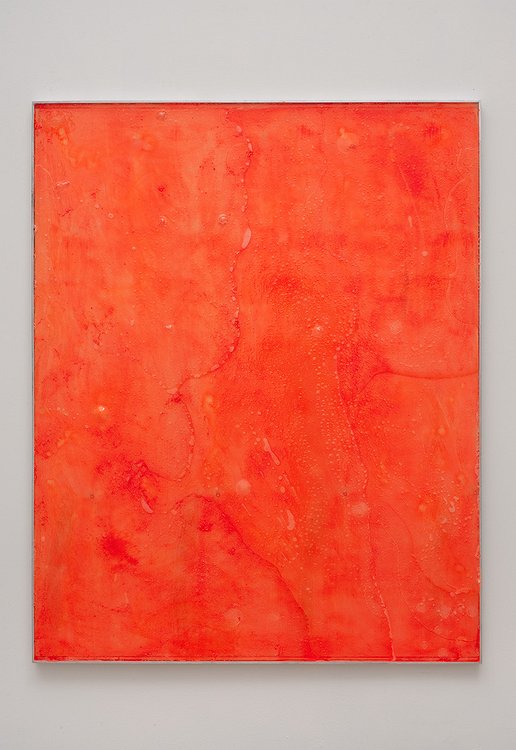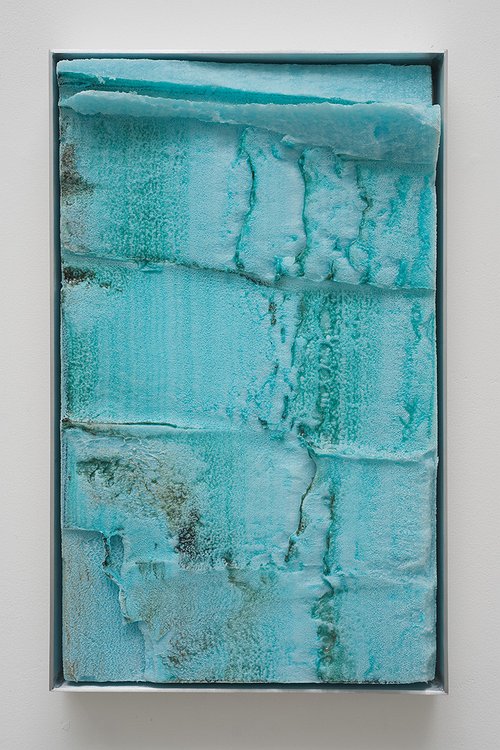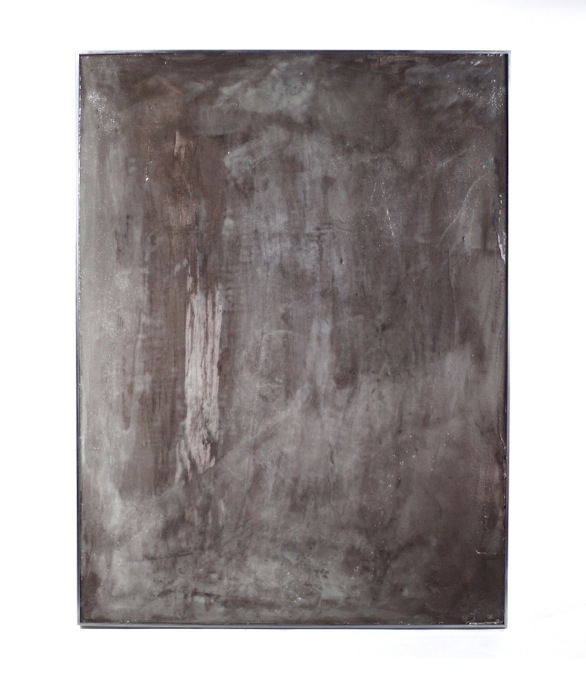Monochromes. Why’s it always gotta be monochromes?
In his recent NYT Magazine profile of Stefan Simchowitz Christopher Glazek writes about the emerging artist Kour Pour that “several artists I spoke with had initially assumed that Pour did not in fact exist — that he was a computer-generated figment of Simchowitz’s prodigious imagination.” One reason Glazek gives is that Simcho’s email was the contact link on Pour’s website. Another, he infers, is because Pour’s digital image tapestry paintings seem so perfectly suited to Simcho’s Instagram- and minor tech billionaire collector-centric art dealing operation.
But Glazek saves the biggest reveal for his annotation of his own article on genius.com: he’d heard that Simcho had already fabricated an artist, and had put his work up for show and sale in 2011. That artist’s market-optimized multi-culti name was Chen Obogado.
An artist told me Simchowitz had approached him to make paintings under a false name, though it seems possible that Simchowitz actually painted them himself. I’m not sure if money ever exchanged hands for the paintings. It may have been more of a prank than a scheme, and the art world is forgiving of pranks.

China Art Objects, Mind Games, installation view with Chen Obogado [L] and actual artist Evi Vingerling [R], Jul/Aug 2011
Let’s review Obogado’s known body of work and brief exhibition history. It won’t take long. As far as I can tell, Chen Obogado made his debut in a summer group show at China Art Objects called, appropriately enough, “Mind Games.”

Chen Obogado, MS6 01, 2011, resin, pigment, aluminum, image: caog.la
Like many actual artists at the time, simulated artist Chen Obogado [SimChO?]’s practice interrogated chemical process-based abstraction; two works are pigmented resin slabs, possibly on aluminum panels, but definitely in tray-like aluminum frames. They retain the traces of their skll-less pour [!]: bubbles, pour lines, and pigment mixed unevenly within each batch. I guess this is supposed to be works’ content. If I were trying to sell them, I’d reference the foam scenes from Fischli & Weiss’sThe Way Things Go and let the zombie abstraction momentum do the rest.

Chen Obogado, MS001PB001, 2011, polyurethane, aluminum, image: caog.la
The third, smaller work is made of polyurethane in aluminum. It is glacial, sculptural and reductive, and appears to be a piece of Stingel-ian insulation board that’s been scraped with a solvent-dipped spackling knife. They have inconsistently formulated serial numbers for titles. Their irrelevance is a standout, even among the forgettable flotsam that seems to have washed up in Culver City that summer. [Like car crash videos in drivers ed, anyone starting a new painting series should be forced to surf 3-yr-old group show installation shots.]

Chen Obogado, CO MSM 001 S1, 2011, resin, platinum powder, aluminum, est. $3,000, opening bid: $1,500. image: laxart
Which wasn’t enough to actually forget them. The fourth and last Obogado to make a documented public appearance was in November, at the LAXART benefit auction. This work was made of resin and platinum powder on/in aluminum. Which sounds like it might be kind of metallic and shiny, a poor, stupid, unconnected man’s Jacob Kassay.
It was listed as a “donation of the artist and an anonymous donor,” which makes little sense in the benefit auction context, and even less if he actually didn’t exist. But it does seem like the credit line of an artist who didn’t exist who wasn’t buying his own materials. Last summer Simcho told Artspace, “I help dealers decide which artists to represent, how to represent them.” Was SimChO presented to CAO and LAXART as a Simcho joint? Was he pitching the glorious future where artists-as-brands soared free of the foibles and frailties of actual artists? The next step in the end of authorship? That would be more than a scheme OR a prank.
The Kassay mention above is interesting because Summer 2011 was when Kassay had his first show in LA, and L&M. And Henry Codax had his first show in New York. Is it too late to organize an east coast/west coast monochrome show of these two non-existent artists? Please say no. #Sumer2015
Though rumors of Kassay and Olivier Mosset’s involvement in Codax’s work were reported at the time, I’ve come to think that Codax must be a gallerist’s dream: all that margin without all those hassles. Assuming it sold, of course, and you could keep it moving. And maybe that’s what doomed SimChO’s work: Simcho couldn’t keep up the act well enough to sell it, or maybe it sucked so bad even his buy-it-now yesmen network didn’t click, and so Simcho decided to eat the cost of two buckets of resin and call it a day?
It’s worth considering Chen Obogado in the Simcho’s own preferred, network/platform/disruptor context [My favorite quote, from another of Glazek’s annotations: “All he demanded was a minimum level of respect. ‘You can’t say I’m bad–I created the post-internet movement!'”] Stories of artists feeling exploited by Simcho remind me of reports last year of the drivers who were the pawns in Uber’s anti-competitive attacks against Lyft. Which LOLjobsWTF when Uber’s CEO talked about how psyched he was to replace all the drivers with robot cars. If Chen Obogado’s any indication, Simchowitz may feel the same way about artists.
Christopher Glazek annotates himself [genius.com]
When he has a fawning audience Simchowitz really lets the vision flow. Must read. [artspace]
